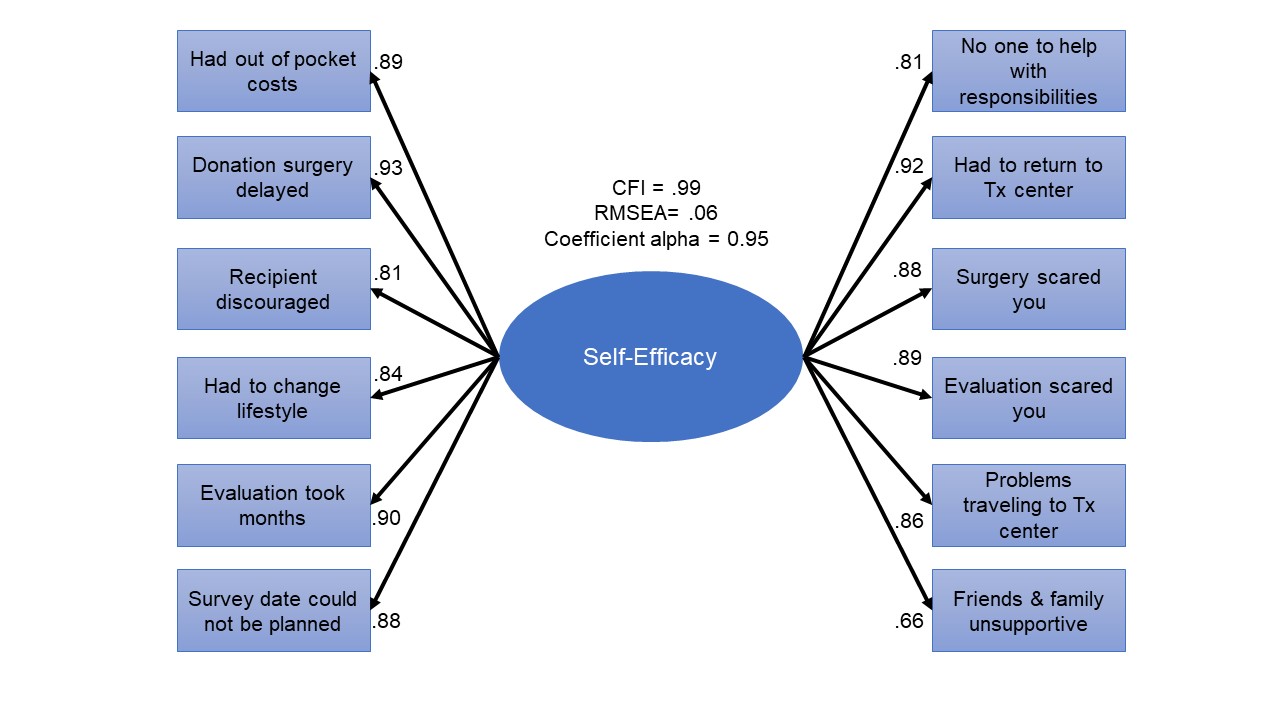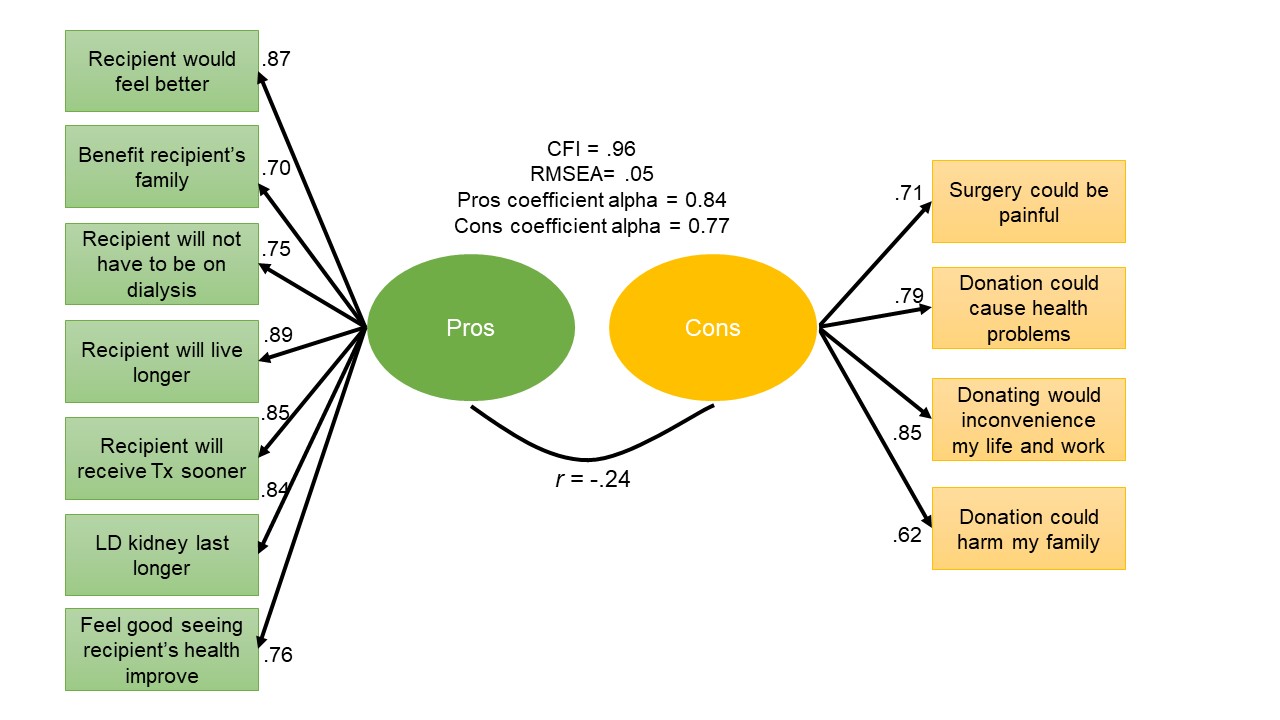Validation of New Measures of Self-Efficacy and Decision-Making for Living Donors
A. D. Waterman1, D. Peipert2, J. L. Beaumont3, F. Weng4
1Transplant Research and Education Center, Los Angeles, CA, 2Feinberg School of Medicine, Northwestern University, Chicago, IL, 3Terasaki Research Institute, Los Angeles, CA, 4St. Barnabas Medical Center, Livingston, NJ
Meeting: 2020 American Transplant Congress
Abstract number: A-075
Keywords: Kidney transplantation, Living donor, Psychosocial, Public policy
Session Information
Session Name: Poster Session A: Kidney Living Donor: Selection
Session Type: Poster Session
Date: Saturday, May 30, 2020
Session Time: 3:15pm-4:00pm
 Presentation Time: 3:30pm-4:00pm
Presentation Time: 3:30pm-4:00pm
Location: Virtual
*Purpose: Kidney transplants from living donors (LD) impart the best clinical outcomes but have declined substantially over the past 15 years. To intervene with LDs more effectively, factors affecting LD’s decision-making including their self-efficacy (confidence facing challenges) and assessment of the pros/cons of becoming a LD (Decisional Balance) must be investigated.
*Methods: Through this study, we developed and validated the first measures of Self-Efficacy and Decisional Balance for LD. A sample of 566 individuals undergoing LD evaluation at 5 transplant centers was surveyed on starting sets of items: Self-Efficacy (12 items), Decisional Balance (13 total items; 8 Pros, 5 Cons). Survey responses were analyzed with confirmatory factor analysis (CFA) models; model fit was determined with the comparative fit index (CFI; values >0.95 indicate good fit) and the root mean squared error of approximation (RMSEA; values <0.06 indicate good fit). Reliability was estimated with coefficient alpha.
*Results: Study participants were primarily White (57%) or Black (16%), female (62%), and were the spouse or partner (26%), parent (20%), sibling (17%), or friend (16%) of the potential recipient. A single factor CFA model fit the 12 Self-Efficacy items well, with high factor loadings. (Figure 1A) After eliminating one Pros item and one Cons item due to low factor loadings, a 2 correlated factors CFA model fit the data well. (Figure 1B) The Pros and Cons factors were negatively correlated with each other.
*Conclusions: These new measures of LD Self-Efficacy and Decisional Balance were found to be reliable and valid. (Abbreviated versions of items given in Figs 1A and 1B.) The final measures are brief and suitable for use in understanding the decision-making of and planning interventions for potential LDs.
To cite this abstract in AMA style:
Waterman AD, Peipert D, Beaumont JL, Weng F. Validation of New Measures of Self-Efficacy and Decision-Making for Living Donors [abstract]. Am J Transplant. 2020; 20 (suppl 3). https://atcmeetingabstracts.com/abstract/validation-of-new-measures-of-self-efficacy-and-decision-making-for-living-donors/. Accessed December 13, 2025.« Back to 2020 American Transplant Congress


